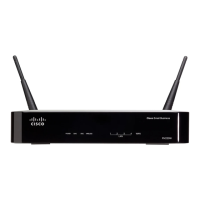
Do you have a question about the Cisco RV220W and is the answer not in the manual?
| Wireless Standard | 802.11b/g/n |
|---|---|
| Wireless Speed | Up to 300 Mbps |
| Frequency Band | 2.4 GHz |
| VPN Support | Yes |
| Firewall | Yes |
| Router Type | Wireless |
| WAN Ports | 1 |
| LAN Ports | 4 |
| Security Features | SPI firewall |
Details on how the router handles internet access, including NAT, modem support, and connection types.
Explains features like ALGs, Port Triggering, Port Forwarding, Dynamic DNS, and URL Filter.
Details on VPN capabilities, focusing on IPSec support and easy configuration.
Describes wireless standards compliance, pre-N stations, VLAN support, WEP, WPA, WPA2, 802.1x, MAC access control, and WPS.
Highlights the 4-port switching hub and DHCP server support.
Details password protection, wireless security, NAT protection, firewall, and DoS attack protection.
Lists the necessary prerequisites for installing the router, including cables and software.
Step-by-step guide for physically installing the router, connecting cables, and powering it up.
Details the configuration options for the Wide Area Network (WAN) connection, including DHCP and Static IP.
Setup instructions for PPPoE, PPTP, and L2TP connection types.
Configuration options for the Local Area Network (LAN) settings, including IP address and DHCP server.
Configures fundamental wireless settings like radio band, network mode, and channel.
Configures wireless security modes like WEP, WPA, WPA2, and Radius authentication.
Manages wireless client connections by permitting or blocking specific MAC addresses.
Configures VLANs for network segmentation and QoS for traffic prioritization.
Configures basic firewall features like SPI, DoS protection, and remote management.
Sets up IP-based Access Control Lists (ACLs) to restrict traffic based on IP addresses and rules.
Configures IPSec VPN tunnels between the router and remote routers, including security parameters.